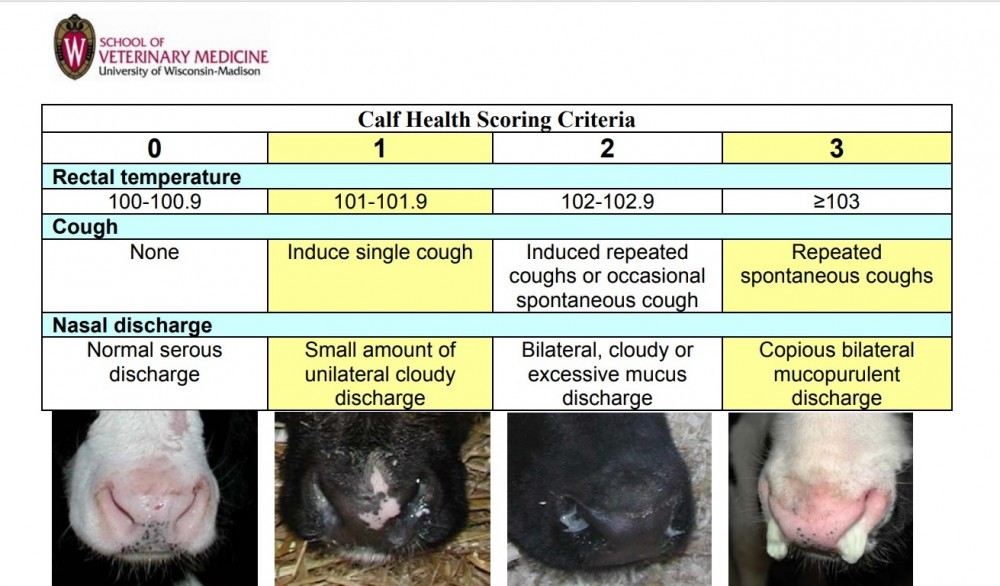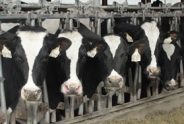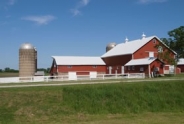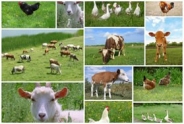Recognizing and Diagnosing Disease in Pre-weaned Calves
Alycia Drwencke, Dairy Management Specialist
Southwest New York Dairy, Livestock and Field Crops Program
Recognizing and Diagnosing Disease in Pre-weaned Calves
By: Casey Havekes & Alycia Drwencke, Regional Dairy Specialists with CCE North Country Regional Ag Team and SWNY Dairy, Livestock, and Field Crops team
The first episode of our 7-week series titled "Critical Calf Care" focused on recognizing and diagnosing disease in pre-weaned calves. A critical component to determining the success of sick calves is recognizing signs of disease, from both a physiological and a behavioral standpoint early on. To promote success on farms in this identification we provide a written summary of the key concepts presented below. You can access the recording of the session here.
First, it is important to recognize both the common and uncommon health issues that affect pre-weaned calves. The more common health issues include pneumonia and respiratory disease, digestive issues, and contracted tendons. In fact, according to a 2014 NAHMS survey, operations that treat pre-weaned calves with antimicrobials stated that digestive and respiratory issues were the most common issues at a level of 21.1% and 12%, respectively. Some uncommon issues include hernias, birth defects, and naval infections.
When it comes to recognizing health issues there are a variety of physiological and behavioral indicators that a producer or calf manager can use for assistance. Physiological indicators include: eye goop, fecal consistency, skin tent, naval characteristics, joint appearance, ear droop, nasal discharge, cough, and temperature. There are several calf health scoring systems and charts incorporating these physical signs that can be implemented on farms to help producers recognize and diagnosis disease. One of these systems (pictured below and linked here) was designed by Dr. Sheila McGuirk at the University of Wisconsin School of Veterinary Medicine, and it assigns a calf a score in each category depending on how they present themselves. The categories used in this system are nasal discharge, ocular discharge, ear position or head carriage, appetite, cough, rectal temperature, fecal consistency, naval characteristics, and joint appearance. The scores range from 0 to 3, with 0 being normal and 3 being severely compromised. In the system demonstrated below, the observer would add up the total score for each calf and use the score as a tool to assist with decision making. One of the great features of this specific system is that it is available as an application for a smartphone (with a one time cost of $2.99), and records on each calf can easily be stored for future use. Using a calf health scoring system can also be a great way for beginner calf raisers to gain confidence and familiarity with common calfhood diseases. It's important to note that there are several other versions of calf health scoring systems that may incorporate different categories than the Wisconsin example, it is recommended to pick the system that works best for your farm, facilities and resources.

Figure 1: Example of Categories Included in the Wisconsin Calf Health Scoring Chart

Figure 2: Example of Record Keeping Sheet to Accompany Health Scoring Chart
On the other hand, behavioral indicators of disease often present well ahead of physiological ones and can be valuable for early intervention. Some of these behavioral indicators include: grooming, feed and water intake, isolation, posture, play, lying time, overall behavior and attitude, and interaction with humans. Feed and water intake can be particularly helpful behavioral indicators when calves are fed with systems that record feeding behaviors. Visual assessments, however, are just as valuable if done consistently. For example, according to researchers Lowe et al. (2019) calves will decrease the quantity of milk consumed, their drinking speed, the number of visits to the feeder, and the length of feeder visits 3 days prior to the onset of clinical signs of disease. Calves will also increase the number of visits to the water trough before clinical signs of disease are observed, which emphasizes the importance for calves to always have access to fresh, clean water. As a reminder, water access is now a requirement for calves starting at 3 days of age according to the FARM 4.0 program requirements. Lowe et al. (2019) also concluded that the number of lying bouts decreased and the duration of time spent lying increased before and following clinical signs of disease. These results suggest that calves become less active in the days prior to expressing clinical signs of disease, and this may be the result of calves having decreased appetite and attempting to conserve energy in response to disease onset (Lowe et al., 2019).
In summary, monitoring behavioral and physiological indicators of disease can help you identify issues early on, which will ultimately improve the outcome of treatment and likely decrease costs. Observing calves is a very cost-effective strategy that can improve calf success throughout the vulnerable pre-weaning period. Lastly, implementing a scoring system and keeping detailed behavior records as part of your daily routine can be very beneficial in early disease intervention. If you have questions, or would like to implement a scoring system on your farm, reach out to Alycia at amd453@cornell.edu or Casey at cdh238@cornell.edu.
Reference:
Lowe, G. L., M. A. Sutherland, J. R. Waas, A. L. Schaefer, N. R. Cox, M. Stewart. 2019. Physiological and behavioral responses as indicators for early disease detection in dairy calves. J. Dairy Sci. 102:5389-5402. https://doi.org/10.3168/jds.2018-15701.
Recognizing and Diagnosing Disease in Pre-Weaned Calves (pdf; 347KB)
Upcoming Events
Boots in the Barn: Cornell Dairy Research Updates
January 13, 2026
January 20, 2026
January 27, 2026
February 3, 2026
February 10, 2026
February 17, 2026
February 24, 2026
Join us for some or all!
Advanced Hoof Health Program
January 15, 2026
Belfast, NY
Who should attend?
- Professional hoof trimmers
- Dairy farm owners or managers in charge of farm foot health
Topics include:
- How to Create a Strategic Trimming Program for your Dairy
- The Latest in Lameness Technology for the Dairy Industry
- Housing and Flooring Design: Its Role in Hoof Care
Webinar: Converting Old Dairy Barns into swine Facilities
January 21, 2026 : Webinar: Converting Old Dairy Barns into swine Facilities
Tim Terry, Farm Strategic Planning Specialist with Cornell's Pro-Dairy program will share information on what it takes to transition an old dairy barn for swine production. We plan to cover flooring, ventilation, and lighting, considerations for system workability, and more! Registration is free.
Announcements
No announcements at this time.





